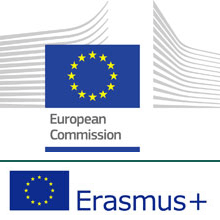Fighting the organized crime is a complex process that encompasses not only hunting down and breaking crime rings, but also making sure that any profit they have made is eventually seized. The law has to unable criminals to freely dispose assets acquired in an illegal way. Yet according to a general rule all accused are „innocent until proven guilty”. Although in many European countries aforementioned rule does not apply in certain cases (especially in the criminal law where the burden of proof is shifted onto the defendant), the European Union decided to officially align its Member States’ regulations on that subject. Works on a directive started in 2012 and the final version was presented in 2014 – „Directive 2014/42/EU of the European Parliament and of the Council of 3 April 2014 on the freezing and confiscation of instrumentalities and proceeds of crime in the European Union”. This document fits perfectly into European Union’s priorities for the fight against serious and organized crime between 2014 and 2017.
In the context, the freezing of the assets means that no action in regards to the proceeds of the crime can be undertaken. The confiscation goes one step further – it is a final deprivation of property ordered by a court in relation to a criminal offence. The term „proceeds of crime” encompasses any economic advantage derived directly or indirectly from a criminal offence. The directive introduces a possibility to confiscate proceeds even if a final conviction is not possible due to the accused’s absentia or illness. What is more, the directive implements a mechanism called an „extended confiscation” – applicable only to a person already convicted of a criminal offence. If there is a reasonable and sufficient evidence that his property was obtained by means of another criminal activity (even not connected with the case for which he has been convicted), the court may order the confiscation of that property. Worth mentioning is a rule of a „third party freezing and/or confiscation” as a subsidiary or alternative to a direct asset freezing and direct confiscation. These regulations aroused certain voices of criticism, yet it must be admitted that when it comes down to recovering illegally obtained crime proceeds the state needs to react as quickly as possible – otherwise the accused will have more time to cover the source of his gains and then introduce for example „dirty money” into the legal system. Layering origins of illegal assets still happens really often – what is absolutely staggering is that according to Andreas Frank, expert on money laundering, less than 1% of illegally acquired money is confiscated worldwide.
Thanks to the adoption of aforementioned European Union’s directive all Member States will have a common set of the minimum rules concerning freezing and confiscation of the assets. Yet it does not mean that until now countries did not have efficient rules on that matter. As an example – Italian law. The confiscation of mafiosos’ assets was enabled from 1982 by the Rognoni- La Torre law. 14 years later the law 109/96 was established that allowed various associations to reuse confiscated assets. In 2011 the so-called „antimafia-code” (decree 159/2011) was developed. It covers all the relevant regulations concerning state’s acquisition of the assets and its reuse. The most important seems to be the possibility to reuse confiscated lands in order to promote legal activities and provide job opportunities. Organizations like Visiterre, Addiopizzo travel and (probably the most well-known) Libera Terra manage seized properties. Usually working as cooperatives they either organize trips with the aim of acquainting people with the history of the region or they simply cultivate the land and sell their products afterwards. These initiatives act as a role model for a socially disadvantaged regions of the country where involvement in organized crime groups’ activities is perceived as the only career choice.
4 October 2016 is the deadline for the transposition of the directive 2014/42/EU into national legislation. By then, all Member States must inform the Secretariat-General of the European Commission on the progress they have made regarding the National Implementing Measures. Then, the Commission has 2 years to research and to assess the impact of introduced law on national legal system. Such a report has to be submitted to the European Parliament and the Council. The law transposition is a long process, sometimes requiring not only the addition of a non-existing provision into the national system, but also the alteration or even removal of existing rules. The adoption of a new law cannot be done automatically without the holistic view on the topic in question. That is why, it seems at least surprising that almost no Member States have taken any measures to conform to the European directive: out of 26 countries bound by this specific law, only 3 of them (Spain, Malta and the Netherlands) has taken steps to implement the regulation into their national legal system.

